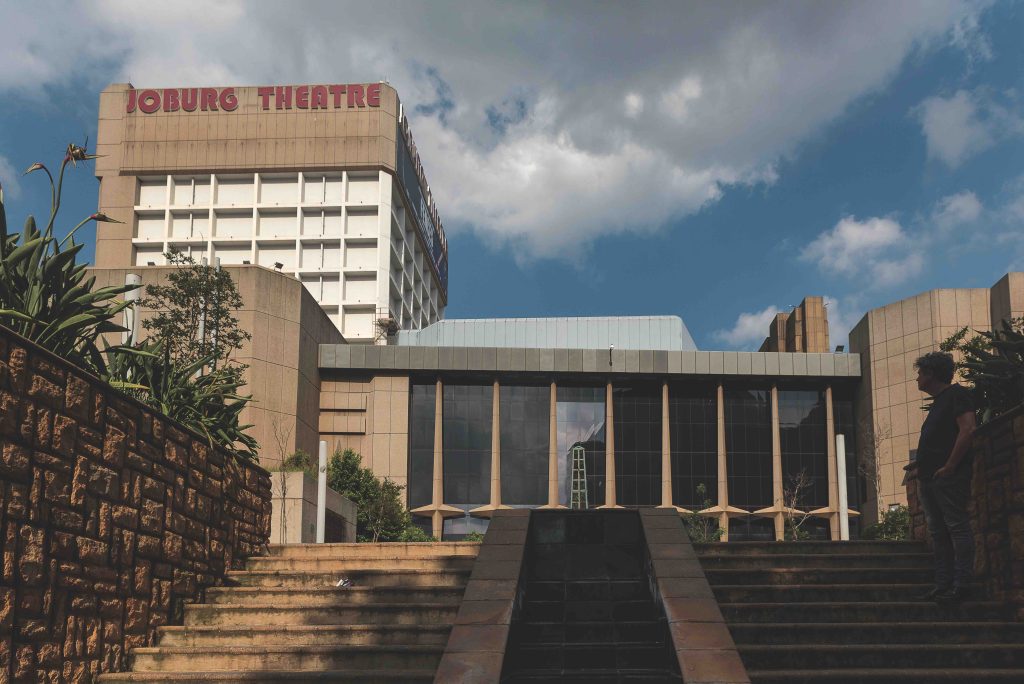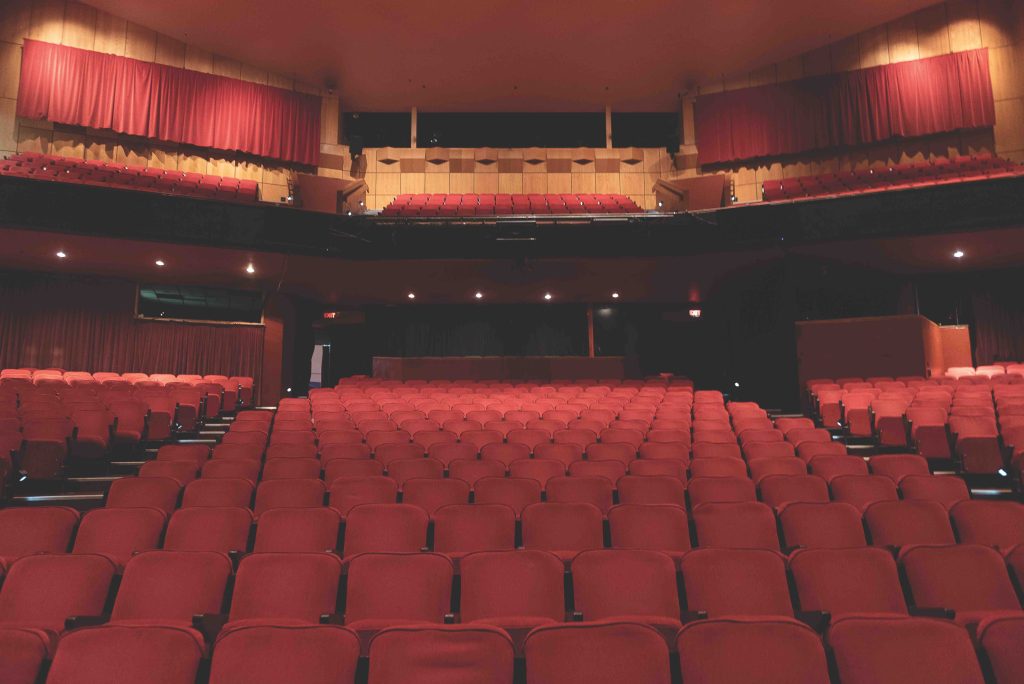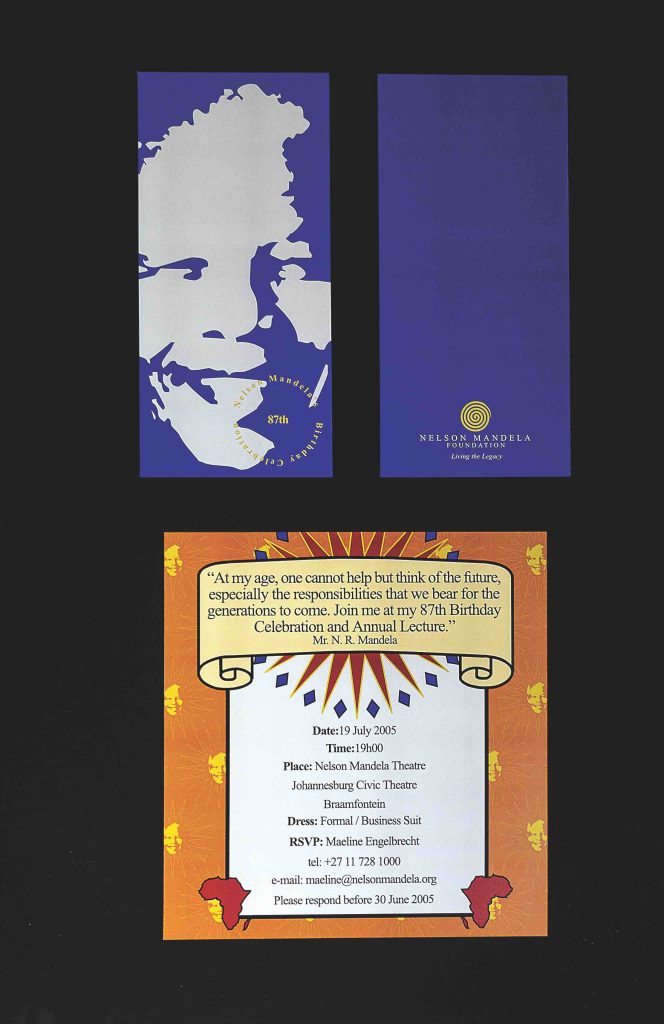Braamfontein, Johannesburg, Gauteng, South Africa. GPS 26°11’28.4”S 28°02’18.9”E

+ + +
On top of Braamfontein Hill is the high-profile landmark called the Johannesburg Civic Theatre, built in 1962.1 Undergoing significant renovations in 1987 and re-emerging in September 1992, it emerged as a globally recognised technical marvel in the theatrical domain.2 In 2009, the theatre was rechristened, the Joburg Theatre, with its main theatre named in honour of Mandela, marking it as a unique tribute to his legacy, with Mandela himself endorsing this tribute.3 The Nelson Mandela Theatre (also called the Mandela Theatre) is the largest in the complex, with 1,069 seats. It serves as a central hub for cultural expression, hosting an array of esteemed productions ranging from Broadway musicals to comedies, including Janice Honeyman’s renowned pantomimes.4 With its red seats, the Mandela Theatre symbolises a beacon of local and international artistic talent, fostering a space where magical moments and communal experiences are cultivated through performance art. The first Nelson Mandela Annual Lecture was hosted here and several thereafter underscoring the role of this place in facilitating discourse on global peace and social justice.5 The theatre is also home to the Joburg Ballet, a professional school developing the next generation of South African ballet dancers.
The Nelson Mandela Theatre’s engagement with the arts and performance serves as a vehicle for societal transformation, embodying Nelson Mandela’s legacy of leveraging cultural mechanisms for societal enhancement.6 This dedication manifests in the rigorous attention to detail observed in every production, where the cast and crew’s commitment to excellence ensures that each performance transcends mere entertainment to offer an enriching, immersive experience for the audience.7 Such a strategy underscores the theatre’s pivotal role in fostering creativity within the community. Beyond its function as an entertainment venue, the Nelson Mandela Theatre emerges as a beacon of Johannesburg’s diverse cultural fabric, inviting patrons to immerse themselves in the arts in a space that pays homage to one of South Africa’s most esteemed icons. Additionally, the theatre contributes to Johannesburg’s stature as a critical centre for arts and entertainment, underscoring the city’s profound regard for these sectors.8

The photographic exploration of the Nelson Mandela Theatre reveals a striking balance between contemporary and classical design elements. The theatre’s exterior is marked by blue neon signage, a modern touch that reflects Johannesburg’s lively nightlife and the city’s energetic atmosphere.9 The colours contrast sharply with the interior’s luxurious red velvet, a nod to traditional theatre aesthetics. The colour red extends beyond its usual association with the entertainment industry, symbolising the profound sacrifices and struggles endured during South Africa’s fight for independence, a sentiment echoed in the hues of the national flag.10 This interplay of colours enriches visitors’ visual experience and embeds the theatre within the broader South African history and identity narrative. The blue neon signage acts as a beacon, attracting attention to the theatre’s dynamic presence within Johannesburg’s urban landscape, underscoring its significance as a cultural and social hub. Upon entering the Joburg Theatre complex, visitors are guided by signage to the four distinct theatres, including the Nelson Mandela Theatre. This organisational scheme ensures that each visitor’s journey through the complex is seamless, allowing easy access to various performances and events that cater to diverse interests and tastes. This thoughtful design and navigational approach enhance the overall experience, making the Joburg Theatre a cornerstone of cultural engagement in Joburg.
At my age, one cannot help but think of the future, especially the responsibilities that we bear for the generations to come.
Mandela11
+ + +
From the Archive at the Centre of Memory (ACoM)
Item code: ZA COM NMFPC-AL2005
Title: Annual Lecture by Professor Wangari Mathaai and Nelson Mandela’s 87th birthday celebration
Size: 55cm x 42cm
Medium: Printed paper

Items related to the Nelson Mandela Theatre in ACoM
1) ZA COM MR-T-4-2-0305: Nelson Mandela Theatre at the Joburg Theatre Complex, previously known as the Johannesburg Civic Theatre.
2) NMFPC-1.13.5-20: Nelson Mandela with the CEO of Johannesburg Civic Theatre, Bernard Jay, 2002.01.30, Braamfontein.
+ + +
Acknowledgements
Our gratitude goes to the staff of the JoBurg Theatre for granting us the chance to document the Nelson Mandela Theatre. We are also thankful for Nelson Mandela Foundation who gave permission to use the photograph of the 2023 Annual Nelson Mandela Lecture.
References
1. Joburg Theatre (2020). Mandela Stage Machinery Upgrade. https://www.joburgtheatre.com/mandela-stage-machinery-upgrade/ [Accessed 15 February 2024].
2. Joburg Theatre (2020).
3. Joburg Media (2019). Joburg Theatre turns 50. https://joburg.org.za/media_/Newsroom/Pages/2012%20Articles/Joburg-Theatre-turns-50.aspx [Accessed 15 February 2024].
4. Sessel, B. (2015). The Johannesburg Civic Theatre. https://joburg.co.za/the-johannesburg-civic-theatre/ [Accessed 15 February 2024].
5. The Nelson Mandela Foundation (2023). Nelson Mandela Theatre at the Joburg Theatre Complex, previously known as the Johannesburg Civic Theatre. https://archive.nelsonmandela.org/index.php/za-com-mr-t-0305 [Accessed 15 February 2024).
6. Joburg (2023).
7. Joburg (2023).
8. Sabra, S. and Burger, Y. (2023). An exploration of co-creating South African city brands to revive the tourism industry during a global pandemic. In: Smal, D., Salaam, S., Bediako, K. and Van Zyl, R. (ed.). VULINDLELA, making new pathways, DEFSA 17th Conference Proceedings 21-22 September 2023, pp. 311-326.
9. Sabra, S. and Burger, Y. (2023).
10. South African Tourism (2024). An enduring symbol of unity and overcoming adversity as a nation.
https://www.southafrica.net/gl/en/travel/article/an-enduring-symbol-of-unity-and-overcoming-adversity-as-a-nation [Accessed 15 February 2024]
11. Annual lecture invitation. https://atom.nelsonmandela.org/index.php/al2005 [Accessed 16 April 2024]
